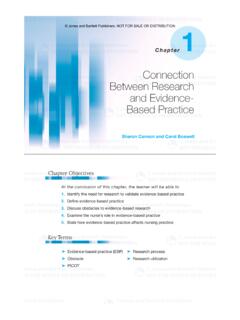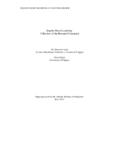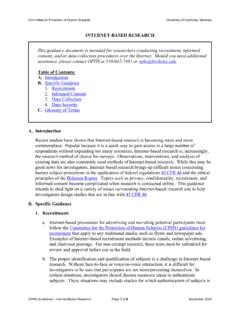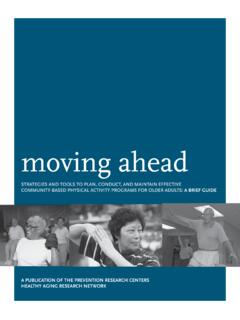Transcription of What does the research say about standards-based grading ...
1 Cover Page Title: What does the research say about standards - based grading ? A research primer Authors: Matt Townsley (currently University of Northern Iowa, Cedar Falls, IA) Tom Buckmiller (currently Drake University, Des Moines, IA) Publication Date: January 2016 Submission Date: November 19, 2018 What%does%the% research %say% about %standar ds0based% grading ?%A research primer Matt Townsley & Tom Buckmiller, January 2016 One hundred years, No research to grading practices have been used for over one hundred years, and to date, there have been no meaningful research reports to support it (Marzano, 2000).
2 In an era of data-driven decision making, that s critical to note. Most teachers have not received adequate training in reliable and valid assessment methods in their teacher preparation and often default to the way they saw their teachers grade when they were in school. As a result, grading practices may vary widely from teacher to teacher (Reeves, 2004) based on style, standards - based grading - TOWNSLEY & BUCKMILLER 1preference, and opinions and without a research -driven rationale (Cox, 2011; Guskey & Bailey, 2001; Zoeckler, 2007). Contributing to this irregularity is the fact that many schools lack a specific, unified grading policy for teachers (O Connor, 2009).
3 Parents of students today were also graded using traditional methods (we all were) and thus this wildly inconsistent way of communicating achievement and growth of students has been entrenched and accepted in the way we think about absence of research supporting traditional grading practices is concerning. As schools continue to adopt a standards - based approach to teaching, learning, and assessment, it is critical to understand the research literature on the topic. The purpose of this primer is to provide an overview of the research literature on the topic of standards - based change grading practices?
4 There are two fundamental reasons why traditional grading practices ought to be re-assessed. First, the Common Core has helped make learning targets more rigorous, consistent, and transparent. The focus has been to create fewer standards but challenge students to think deeper and work towards more meaningful applications. Previous iterations of school curricula have focused on far-reaching and low-level rote learning (memorizing facts). Thus traditional grading practices were perhaps a more appropriate way to measure how a student is doing in school back then. But today grading experts (Guskey, 2014; Marzano, 2000; O Connor, 2009; Reeves, 2008) agree teachers should update their grading practices to better align with the realities of how and what students are learning in , Every Student Succeeds (formerly No Child Left Behind) has changed the way school leaders and teachers operate.
5 These educational laws mandate that schools may no longer simply fail students who don t learn, and move on (Vatterott, 2015). Instead, all students must be proficient. School leaders must now ensure their system s purpose is to develop talent rather than merely sort it (Guskey, 2011). Thus, higher scrutiny and accountability over the measurement of student achievement has demanded grades be more standards - based grading - TOWNSLEY & BUCKMILLER 2reflective of learning. No Child Left Behind initiatives have exposed that traditional grading practices may no longer be an effective way of measuring student progress in the classroom because they do not equate or correlate with performance on standardized tests (Vatterott, 2015).
6 What is standards - based grading ?Studies show standards - based teaching practices correlate to higher academic achievement (Craig, 2011; Schoen, Cebulla, Finn, & Fi, 2003). Therefore, it is critical that teachers also link assessments and reporting to the standards (Guskey, 2001). Beatty (2013) suggests standards - based grading (SBG) is based upon three principles. First, grades must have meaning. Indicators, marks and/or letters should provide students and parents with information related to their strengths and weaknesses, separating out non-academic behaviors. Second, classroom- grading systems must incorporate multiple opportunities for students to demonstrate their understanding based on feedback.
7 The final principle of standards - based grading is separating academic indicators from extraneous factors such as homework completion and extra 1: Grades should have meaningGrades should provide meaningful feedback to students, document their progress, and help teachers make decisions about what instruction a student needs next (Wormeli, 2006). Traditional grades and report cards are muddied and misleading when they combine both academic factors and non-academic factors into a single grade. Non-academic behaviors are important and merit their own reporting mechanism because they matter in college and in a career.
8 These behaviors include factors such as punctuality, work ethic, attendance, participation, and ability to meet deadline. But when these behaviors are combined with academic information (does my child know how to do algebra?) to form a single grade, learners and their parents can be deceived by a false and inaccurate calculation. Vatterott (2015) gives these examples: standards - based grading - TOWNSLEY & BUCKMILLER 3A student can compensate for low understanding of the content and standards by maintaining perfect attendance, turning in assignments on time, and behaving appropriately in class.
9 A different student may understand content and standards perfectly well but receive a low grade because he or she is late to class, fails to turn in assignments on time or acts inappropriately (p. 63-54).A grading system shouldn t allow a student to mask their level of content understanding with their attendance, their effort level or other peripheral issues (Scriffiny, 2008). These are separate issues and should be reported separately. Instead, a grading system should be based upon clear learning targets, a practice in which Marzano (2003) supported because students perform up to 20 percent higher compared to instruction without clear 2: Multiple opportunities to demonstrate learning based on feedbackWormeli (2011) proposed allowing redos and retakes, a practice often ignored in traditional grading .
10 He argued retakes are necessary in order for the grade to truly capture student growth at the time of reporting rather than a single moment in the past. According to Marzano and Heflebower (2011), if the purpose of a grade is to report mastery, then educators must look for evidence of learning over time with multiple opportunities for grading is a logical extension of this idea, and allows teachers to provide clearer and more effective feedback when compared to traditional letter grades. Haystead and Marzano (2009) conducted a comprehensive review of studies on classroom instructional strategies, concluding the use of scoring scales and tracking student progress over time towards a learning goal yielded a 34 percentage point gain.


















